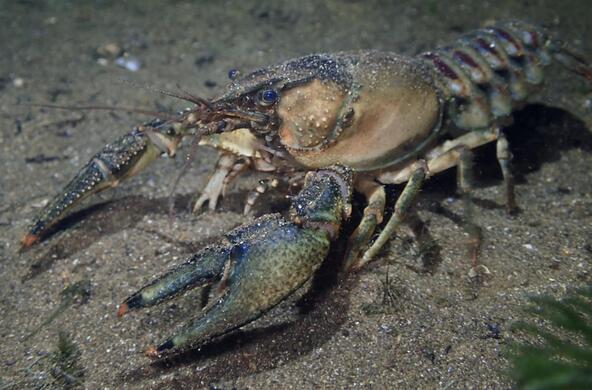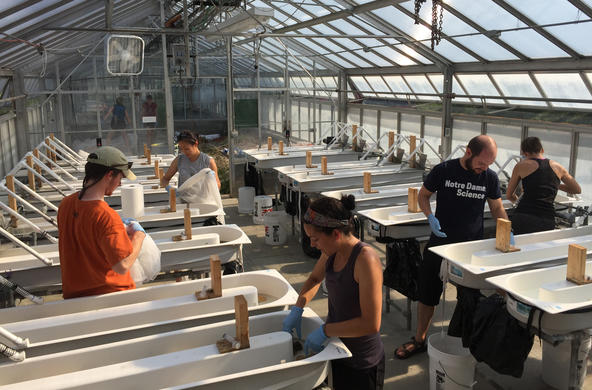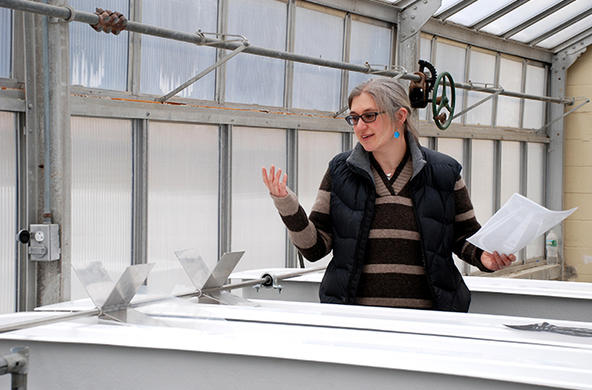
The Cary artificial stream facility is located on Cary Institute of Ecosystem Studies' campus in Millbrook, NY. The facility consists of 20 artificial streams that can be used for experiments that explore diverse ecological and environmental questions.
The 20 “streams” are recirculating fiberglass channels and the water is moved by a stainless-steel paddle wheel. Similar artificial stream facilities are housed at Loyola University Chicago, University of Florida and University of Notre Dame. The facility was completed in 2013 and was supported by a grant from the Wallace Genetic Foundation.
Cary Scientist Emma Rosi and colleagues have learned a great many effective techniques and methods for using these kinds of stream channels, which are laid out in the document “Artificial stream channels for ecological experiments: Design, use, and example applications.”
A bibliography of publications that have used the Cary facility or similar facilities is included below.
- Artificial stream channels for ecological experiments
- Publications
Rosi, Emma, Joanna Blaszczak, Christopher Dutton, Stephen Hamilton, Timothy Hoellein, John J. Kelly, Sylvia S. Lee, et al. “Artificial Stream Channels for Ecological Experiments: Design, Use, and Example Applications”. Cary Institute, 2018. https://doi.org/10.25390/caryinstitute.7221095

Content
| Stream design and construction | Experimental design | Data collection |
|---|---|---|
| Construction material: fiberglass or PVC canvas | Replication and duration | Microbial communities |
| Paddle wheel design and motor speed | Water column conditions | Invertebrates |
| Site for artificial stream arrays | Substrata | Whole-system functional measures |
| Water source and maintenance | Biofilm inoculation and colonization | Cleaning the streams after experiments |
| Invertebrate colonization Statistics | ||
Abstract
Artificial streams are effective tools for ecological research, as they offer unique opportunities to address significant issues in stream ecology. However, the current literature lacks a detailed primer on the construction and use of artificial streams for ecological inquiry, which limits opportunities for investigators to incorporate these powerful tools into their research.
Our objectives are to provide a starting point for those interested in constructing and using replicated artificial stream mesocosm experiments and to encourage their use in future research on stream ecosystems.
First, we discuss the advantages and potential applications of artificial streams to address key questions in stream ecology. Next, we provide detailed design plans for a recirculating artificial stream array, with advice on construction, arrangement, and maintenance. Finally, we provide guidance on strategies for experimental design, sampling, and data analysis based on examples from recent research, as well as a list of “lessons learned” from our experience using artificial streams.
This overview of constructing and using artificial streams can help support the creative development of new ecological insights and experimental approaches for robust measurements of factors driving complex interactions in stream ecosystems.





